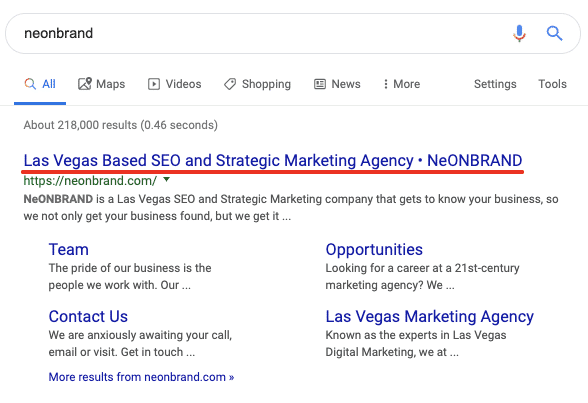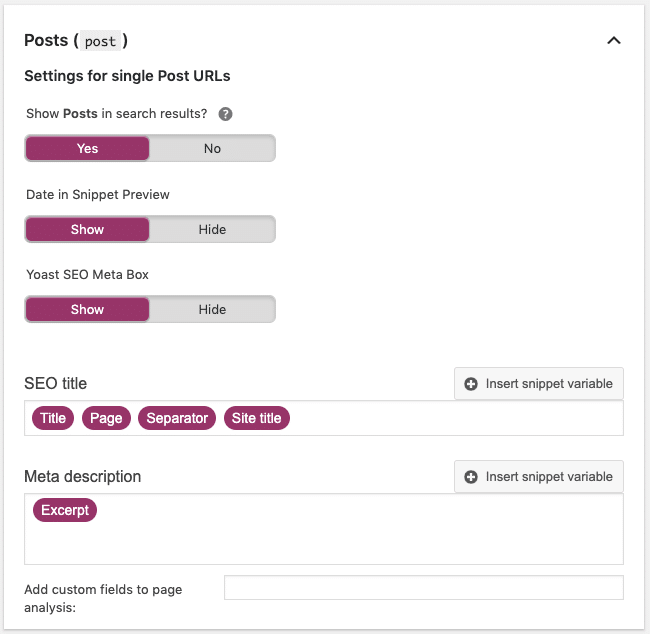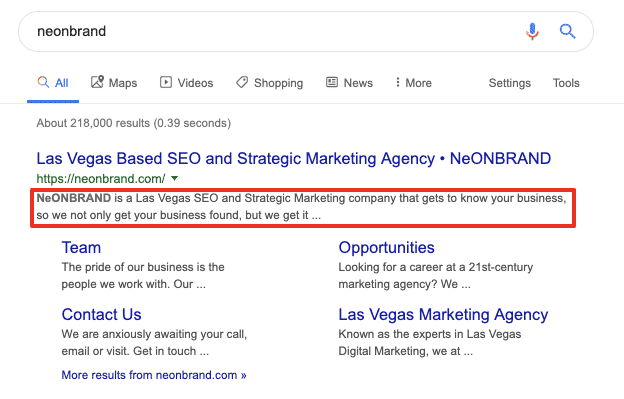5 Common SEO Oversights
Since search engine optimization has a lot of parts. It’s pretty common to overlook a tip or two while optimizing your site for search engines. We’ve optimized a lot of websites over the years, like a lot. There are a few common SEO oversights that can have a quick return.
When onboarding new clients we often take over websites that have either never been or were previously optimized elsewhere. When reviewing the sites for our SEO purposes, we see a lot of regular items that get overlooked.
Here are the top 5 common SEO oversights we’ve learned from optimizing hundreds of websites.
Common SEO Oversight #1: Meta Tag Issues
There are a countless number of meta tag optimization techniques out there on the web. Even so, these are often the most easily overlooked issue when it comes to optimizing your website for search engines.
There are only a couple meta tags that are of any importance these days:
- Title Tag
- Meta Description
Title Tag
The title tag is usually the thing that shows up on your Google search results. The title tag will also display in the tab at the top of your browser.


The reason we are using words like “usually” and “often” is because Google does what Google does. Sometimes Google may display different text for your title tag. This is Google’s attempt to help get the searcher the right unique information when performing a search.
If you’re using WordPress, and along with WordPress, the Yoast plugin, then adding your title tag couldn’t be easier. There’s a box on the edit screen for every page of your site titled “Yoast SEO” or “Yoast SEO Premium”. Right in that box, hit the “Edit snippet” button and you can make all the changes you’d ever need. Yoast also gives some great recommendations in that box as well.
Meta Description
The meta description is another optimization point that often gets overlooked. In a perfect world your meta description should be unique. If you are working on optimizing a site with hundreds of pages, that may not be an easy task.
Quick Meta Description hack using Yoast SEO
In the General Yoast SEO settings, if you navigate to the “Search Appearence” section, you can set a default meta description pretty easily. Now this is NOT a perfect solution, but something is better than nothing, right?
Once there, click on the “Content Type” tab. For each of the post types on your site you’ll see a little form section that can be filled out, and by default the “Meta Description” field is left blank.
In that box, type these letters: %%excerpt%% which will instantly be changed over to a purple box called “Excerpt” like this:

This will at least populate the meta description with some text from your site, although not unique. Something is better than nothing in this scenario.
Back to Optimizing the Meta Description
The real way to make sure your meta descriptions are optimized as well as possible is to go page by page and write a unique description for every page. You can do this using the Yoast SEO edit field on the page as well.
The meta description is what Google sometimes uses to populate the text under your domain in the search results:

Now this is where things get interesting. Google doesn’t necessarily use your meta description, in fact they rarely do. They know the text on your page and they know the user better than you do, so they often grab whatever text they want from the page for your description.
The meta description is still a very important thing to optimize as its only more unique content for Google to digest. Definitely want to do it.
Common SEO Oversight #2: No Security Certificate
Starting with the days of LetsEncrypt, getting a security certificate on your website has never been easier. A security certificate, also known as an SSL, make it so the information transmitted by a user to your server is protected and cannot be hacked by a malicious third-party. You want that protection!
Along with the security reasons, Google made it an absolute requirement with the release of Google Chrome 68. Any site operating without a security certificate is now shown as “not secure” to your users. That’s reallllllly bad. Users will leave a site if it doesn’t look safe.
Adding an SSL to your site couldn’t be easier these days. You setup your SSL from the host of your website. Logging into your host should reveal the steps to adding an SSL to your account. HOPEFULLY they offer a free certificate. Most hosts offer free SSLs these days, so if yours doesn’t, it might be time to make a change.
Common SEO Oversight #3: Not Using AMP
In 2016, Google announced a new way for mobile browsers to load websites called Accelerated Mobile Pages, AMP for short. A lot of early bird SEO’s jumped on board and started adding them to our websites. It was an arduous process that took forever to incorporate.
At almost the exact same time, Automattic launched a plugin for WordPress to super easily enable AMP pages on your site.
Get that plugin setup and turned on for your blog posts at a minimum. You can enable it for any post type on your site. Be careful turning it on, as it does change the look and feel of your site unless you build custom templates for it.
You may also consider installing the Glue for Yoast SEO & AMP plugin which not only incorporates SEO into your AMP pages, it also adds a few customizations to the colors for your AMP pages as well.
Common SEO Oversight #4: Keyword Stuffing
An old, I repeat, OLD SEIO tactic has been summed up in the term “Keyword Stuffing”. This was an early tactic used by many SEOs to optimize a page for a specific word, they would repeat themselves a number of times on a webpage and it would improve the ranking. This is no longer a thing!
When writing your pages, or re-writing in some scenarios, make sure you are writing like a person speaks. Don’t stress about how many times you get a keyword on a page, especially don’t worry if you said that same keyword the exact same way every time. Type naturally, use synonyms and alternative ways of speaking. Those are going to help you more than saying the same word 10+ times!
Common SEO Oversight #5: Publishing Non-Original Content
Many of the professional sites suffer from a very serious content problem, there’s just not a lot of different ways to explain what they do. There’s only so many ways a CPA, Dentist, Attorney, etc can explain what they do that some other guy hasn’t already said.
The non-original content problem is real, it’s very tempting to Google some other business in another locale and then just copy paste their text into your site. This is a big bad no-no. Don’t do it! If you’re an ecommerce store selling things that exist on 100 different sites, don’t copy their descriptions! Also a no-no!
The way you win in SEO is by publishing original content to your site. Don’t copy it from elsewhere. Google knows where text was published first on the web, and if you weren’t the first to publish something, not only does it not help you… it may also cause a ranking punishment!
Web searchers want to know you’re the best in the business, Google is trying to figure out who that person is. If Google has two people saying the same thing, it doesn’t help you out in the least.
Sit down and get out your computer and just start typing. Don’t use other sources to explain what it is that you do. Just say it in your own words to the best of your ability. If at the end the content is very similar to other pages on the web, that’s okay! Getting a cavity filled is probably the most boring thing to explain on a website! But if you explain it differently than everyone else, you stand a much better chance at ranking.
Avoid Common SEO Oversights!
Doing the “little things” like those mentioned above, are how a site differentiates itself over their competitors. Be the best by doing those things and getting the traffic so you can sell your goods and services. Takes time and energy, but worth it in the long term!

